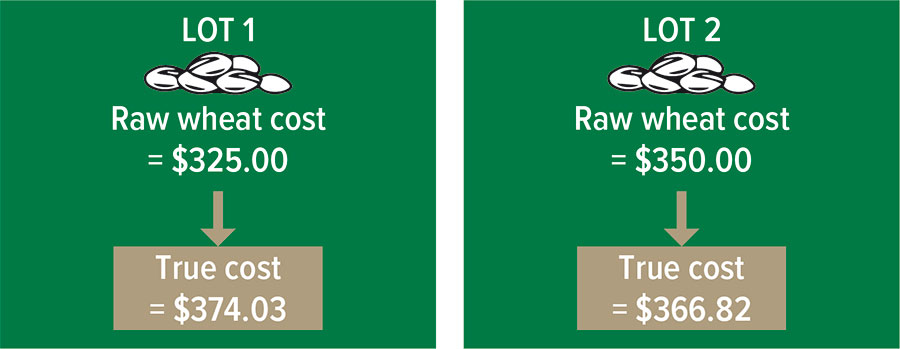For Asian flour mills, choosing high-quality Australian wheat can result in significant cost savings over lower-quality wheat – even though Australian wheat might be more expensive per tonne.
The Australian Export Grains Innovation Centre (AEGIC) is helping millers understand this ‘true cost’ of flour production to better position Australian wheat as a preferred choice when it comes to quality and overall value.
The purchasing manager: a case study
Erwin works for a major flour milling company in Makassar, Indonesia. He has been with the same mill for several years, and last year was promoted to the role of purchasing manager. Erwin’s new role is especially important – he is part of the team responsible for sourcing the wheat that gets milled into flour to make noodles and bread.
Erwin is under a lot of pressure to make sure his company is getting value for money from the wheat that it buys. It is a delicate balancing act – the flour must be of sufficient quality that customers will accept it, but inevitably (and understandably) price often ends up being what tips the scales.
Having been in the industry for many years, Erwin feels a strong sense of pride about the quality of the flour his company sells. His opinion is that Australian wheat is the best choice to make high-quality flour. Australian wheat is bright, white and clean, and is especially good for noodles with fantastic colour and texture. Nobody likes a mushy, dull-looking noodle.
However, the company has found in recent years that the cheaper price of wheat from other countries is often too attractive to ignore. It is frustrating; Erwin wishes he could find a way to incorporate more Australian wheat into his mill’s gristing to boost flour quality, but he is always running into brick walls trying to justify the higher price per tonne.
A new hope…
One day, Erwin receives an invitation through his contact at the AEGIC to a webinar that will explore methods for calculating the true cost of wheat lots.
As he listens to the presenters, he feels a growing sense of optimism as he realises how valuable the information will be for him and his company.
AEGIC’s milling experts have developed a useful, practical information package that clearly demonstrates how to calculate the true value of wheat lots, taking into account things such as screenings, the cost of cleaning the wheat, moisture conditioning and flour extraction rate.

AEGIC takes the approach of calculating the cost of producing one tonne of flour and refers to this as the ‘true cost’ when referring to the wheat price.
AEGIC’s data clearly shows that cheaper wheat can sometimes end up being significantly more expensive in the long run. Often, the higher quality of Australian wheat, with its low moisture and high flour yield, results in better value overall.
As a seasoned operator, Erwin knows this is not always the case, but nevertheless he is excited to have some new hard evidence and tools to incorporate into his assessment when buying wheat. He sees more Australian wheat on the horizon for his mill.
While Erwin is a fictional character, AEGIC’s data and tools are very real and have significant potential benefits for both millers and Australian growers. AEGIC is actively coaching millers in Asian markets with this information to help them understand the true value of Australian wheat.
Ensuring Australian wheat quality is maintained and improved, as well as looking after Australia’s grain customers with practical, technical support, helps maintain Australian wheat as a preferred choice for millers.
More information: AEGIC Information package
AEGIC is an initiative of the Western Australian State Government and GRDC.

























































